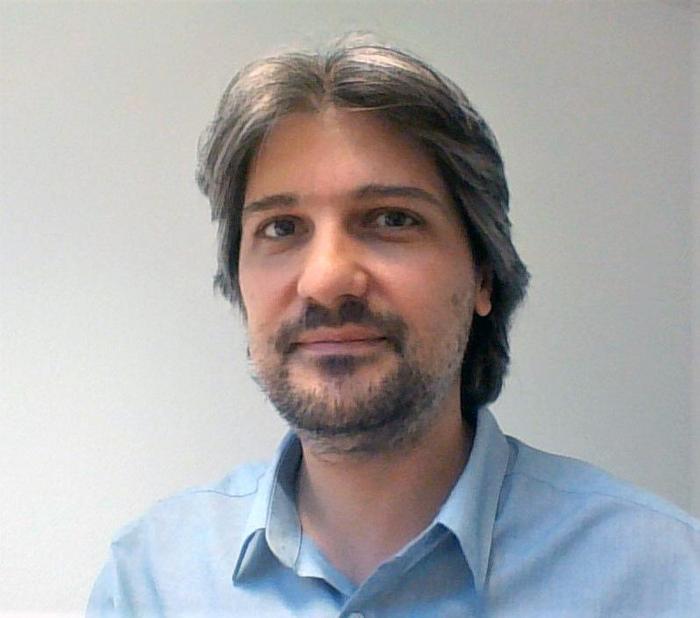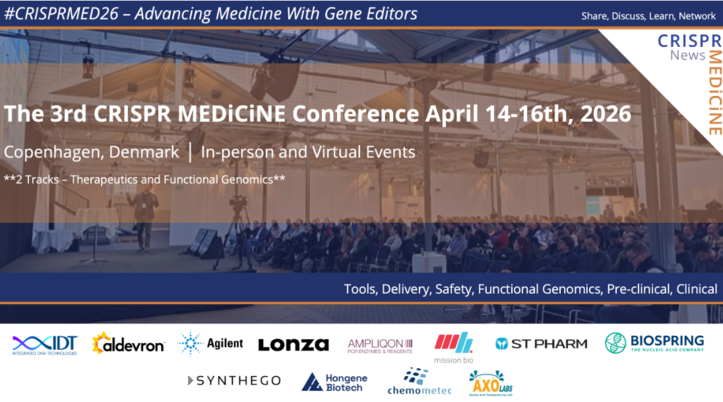CMN Webinar Catch Up: CRISPR Off-Targets
Our webinar kicked off with exciting presentations from invited speakers from academia, who told us about two of the newest tools for assessing off-target analysis and safety of therapeutic gene editing.
Later, our guest panelist Roberto Nitsch PhD, Associate Director of Gene Therapy at AstraZeneca in Sweden, shared some his views about the application of gene editing to therapeutic development, and along with our speakers, he answered interesting questions from the CRISPR community.
If you misssed the live webinar, you can access the on-demand version by following this link.

Julia Klermund - Quantifying chromosomal rearrangements
Julia Klermund PhD is a postdoctoral researcher in the lab of Toni Cathomen at the Institute for Tranfusion Medicine and Gene Therapy in Freiburg, Germany. She has spent a large portion of her postdoc working on the ‘chromosomal aberrations analysis by single targeted linker-mediated PCR sequencing’ or CAST-Seq assay. The assay was invented and developed by Giandomenico Turchiano, now Senior Researcher at University College London, during his time as a postdoc in Toni Cathomen's lab.
CAST-Seq was developed specifically to quantify chromosomal rearrangements following gene editing with CRISPR-Cas and TALENs, thus filling an important void in the current toolbox for assessing the safety of designer nucleases. The pre-clinical assay detects such changes with high sensitivity by mapping the chromosomal sequences fused to one arm of the target site. So if a translocation has occurred at the target site, the assay can reveal what chromosome/chromosomal region the target site is now fused to.
During her presentation, Julie Klermund took us through the clinically-relevant designer nucleases, i.e., the zinc finger nucleases, TALENs, and Cas endonucleases, and outlined the potential sources of genotoxicity that may result from therapeutic gene editing with these. These genotoxic side effects generally encompass small indels, large indels and translocations, each of which may result in loss- or gain-of-function mutations.
Regulatory authorities request a panel of genotoxicity tests for experimental therapies, and Julie Klermund explained how direct analysis of clinically relevant gene-edited cells with CAST-Seq may contribute to better qualitative and quantitative pre-clinical assessments of gene-edited therapies.
CAST-Seq data is analysed using a specially developed bioinformatics workflow, and the Cathomen lab has already found novel types of chromosomal rearrangements that have never been described before. The findings from the work were published in Cell Stem Cell earlier this year.
During a previous interview, Toni Cathomen told us that a company startup to further advance the technology and bring it into the clinic was in the pipeline.
CMN Webinars
The CMN Webinars are hosted and organised by CRISPR Medicine News and will give you the latest updates from the CRISPR Medicine field. In collaboration with our growing global CRISPR Medicine community, we will select relevant topics and invite the speakers from the field.
Sign up to the CMN newsletter for announcements about upcoming webinars, and watch past webinars on-demand here.

Ayal Hendel PhD - New tool for higher accuracy in off-target analysis
In June, Ayal Hendal, Principal investigator at Bar-Ilan University in Israel published a paper in Nature Communications describing CRISPECTOR, a new software tool that efficiently separates signal from noise and can detect, statistically evaluate, and quantify many types of off-target genome-editing activities. The work was carried out in collaboration with Zohar Yakhini, a faculty member at Herzliya Interdisciplinary Center and the Technion, Israel.
During the CMN Off-Targets webinar, Ayal took us through the current methods for CRISPR off-target analysis, which include a variety of amplification and next-generation sequencing- (NGS) based approaches, most notably Guide-SEQ.
Although improvements have been made to off-target analysis tools, none of the existing approaches are entirely optimal for quantifying genome-editing activity. Ayal explained the limitations of the current tools.
CRISPECTOR works by applying statistical modelling to determine and quantify editing activity using NGS data. It learns to recognise the specific patterns of background noise originating from NGS reading errors and from insertion of incorrect nucleotides during the multiplex PCR reactions that are required prior to NGS. When the background noise can be recognised, the signal - i.e., the true editing events - can be detected and quantified much more precisely than by simple subtraction of the control from the treatment, a method other tools have used.
Ayal Hendal explained the advantages of CRISPECTOR for off-target analysis, and how it not only increases accuracy of off-target measurements but is also useful to detect adverse structural variations and translocation events that occur during genome editing.
We also interviewed Ayal Hendal soon after the CRISPECTOR work was published. You can read that interview here.

Industry Insights - Roberto Nitsch
After the presentations, we opened up for a panel discussion that included our speakers as well as our special guest Roberto Nitsch from AstraZeneca. Roberto is leading the Gene Therapy safety group at AstraZeneca towards the generation of safer CRISPR medicines and the de-risking of AAV for therapeutic applications.
Roberto tells us that the key to using CRISPR therapeutically is to make it as safe and precise as possible, and by dosing it at safe levels and in safe ways, e.g., whether a DNA, RNA, or ribonucleoprotein-based gene-editing cargo is delivered may be a factor.
He sees the emergence of new tools such as CAST-Seq and CRISPECTOR as a spectacular response to the growing need for standardised methods to detect and measure as many unwanted Cas9-associated editing events as possible.
In an earlier interview (2019), Roberto Nitsch shared with us the main safety issues and limitations associated with CRISPR medicine at that time, considerations surrounding viral and non-viral delivery methods, and the priorities within the CRISPR-Cas9 scientific community with resepct to safety analysis.
Tags
ArticleCMN Webinarsin vivoGene therapyPolicyQuality ControlCRISPR-CasCas9TALENsSafetyAstraZeneca
CLINICAL TRIALS
Sponsors:
Suzhou Maximum Bio-tech Co., Ltd.
Sponsors:
Zhejiang University







